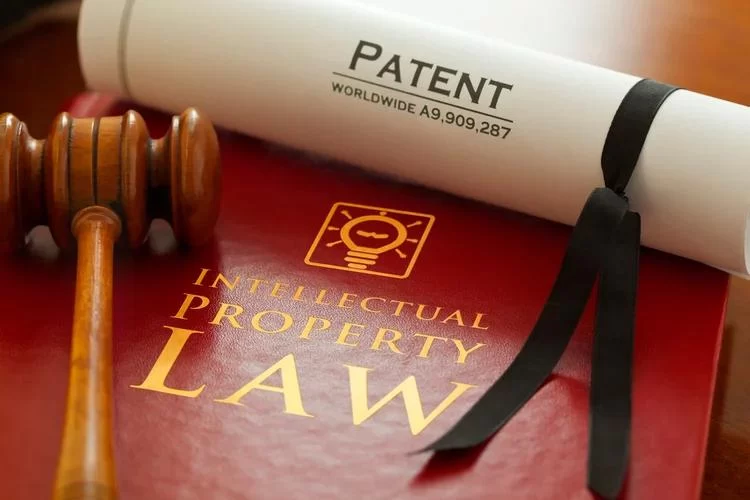- Understanding Intellectual Property Rights
- Key Types of Intellectual Property Protection
- Practical Steps to Protect IP Rights
- Real-World Examples and Lessons
- Professional Support for IP Protection
1. Understanding Intellectual Property Rights
Intellectual property rights are legal protections granted to creators and inventors to safeguard their original works, inventions, brands, and designs. These rights ensure that individuals or companies can control the use and distribution of their creations, which is essential for encouraging innovation and creativity. Protecting intellectual property rights is a critical concern in today's competitive market, as it prevents unauthorized use or copying that can cause significant financial and reputational damage.
Intellectual property can be broadly categorized into patents, trademarks, copyrights, and trade secrets. Each type serves a distinct purpose and protects different forms of creative output. Understanding these differences is the first step toward effectively protecting your assets and maintaining your competitive edge.
1.1 Why Protection Matters
Without proper protection, your innovations or brand identity can be exploited by others, diminishing your market share and undermining your efforts. Intellectual property protection not only secures your legal rights but also enhances your business value, attracts investors, and can open new revenue streams through licensing or partnerships.
2. Key Types of Intellectual Property Protection
2.1 Patents
Patents protect inventions and technological advancements by granting exclusive rights to the inventor for a limited time, typically 20 years. This prevents others from making, using, or selling the invention without permission. For example, a tech startup developing a novel battery technology would seek patent protection to prevent competitors from copying their design.
2.2 Trademarks
Trademarks protect brand elements such as logos, slogans, and names that distinguish goods or services. Registering a trademark secures the identity of your brand and prevents others from using confusingly similar marks. This is vital in crowded markets where brand recognition can make or break success.
2.3 Copyrights
Copyrights protect original works of authorship like books, music, software, and art. They give the creator exclusive rights to reproduce, distribute, and display their work. Copyright protection arises automatically upon creation, but registration offers additional legal benefits in enforcement.
2.4 Trade Secrets
Trade secrets protect confidential business information that provides a competitive advantage, such as formulas, processes, or customer lists. Unlike patents, trade secrets do not expire but require active measures to maintain secrecy.
3. Practical Steps to Protect IP Rights
3.1 Conduct Thorough Research
Before filing for protection, conduct comprehensive research to ensure your invention or brand does not infringe on existing rights. This helps avoid costly legal battles and strengthens your application.
3.2 Proper Registration
Register your intellectual property with the appropriate authorities. For patents and trademarks, this usually means filing applications with national or regional patent and trademark offices. Though copyrights are automatic, registration is recommended for stronger enforcement.
3.3 Monitor and Enforce Your Rights
Protection is not passive. Actively monitor the market for potential infringements and be prepared to enforce your rights through cease-and-desist letters or legal action if necessary. Ignoring infringements can weaken your IP claims over time.
3.4 Use Confidentiality Agreements
When sharing sensitive information with partners, employees, or contractors, use non-disclosure agreements (NDAs) to legally bind parties to confidentiality. This is crucial for protecting trade secrets and unpublished innovations.
3.5 Educate Your Team
Ensure that everyone involved in your business understands the importance of intellectual property and follows procedures to safeguard it. Human error is often the weakest link in IP protection.
4. Real-World Examples and Lessons
4.1 The Apple vs. Samsung Case
One of the most famous intellectual property disputes involved Apple and Samsung, where Apple accused Samsung of copying its smartphone designs and user interface. This legal battle highlighted how crucial design patents and trademarks are in the tech industry. The case underscores the importance of registering IP early and being vigilant against infringement.
4.2 Small Business Trademark Success
Consider a local coffee shop that trademarked its unique logo and name early on. When a larger chain attempted to use a similar branding, the small business successfully enforced its trademark rights, preserving its brand identity. This example demonstrates how intellectual property protection is not just for large corporations but essential for businesses of all sizes.
5. Professional Support for IP Protection
5.1 Why Legal Expertise Matters
Intellectual property law can be complex and varies by jurisdiction. Engaging professionals who specialize in this area is invaluable to navigating application procedures, enforcement strategies, and dispute resolution. Experienced lawyers can help tailor protection strategies to your specific needs and maximize the value of your IP assets.
5.2 How Fred Miller Lawyer Can Help
If you are looking for expert guidance on how to protect intellectual property rights effectively, Fred Miller Lawyer offers comprehensive services including patent filing, trademark registration, copyright advice, and enforcement support. Their personalized approach ensures you receive the most suitable solutions for your innovations and business goals.
By taking proactive measures and seeking professional assistance, you can secure your intellectual property and strengthen your position in the marketplace.


 impact disability law
impact disability law brandon campbell attorney
brandon campbell attorney 108-18 queens blvd forest hills ny
108-18 queens blvd forest hills ny peraza law
peraza law jim hall lawyer
jim hall lawyer okhovat law group
okhovat law group